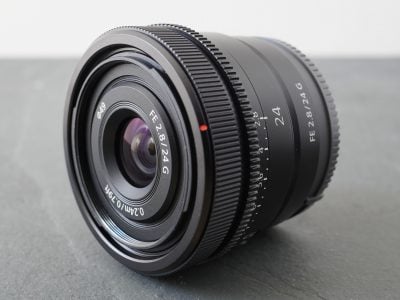Sony FE 24mm f2.8 G review
-
-
Written by Gordon Laing
Intro
The Sony FE 24mm f2.8 G is a compact wide-angle prime lens for the full-frame e-mount mirrorless system. Announced in March 2021 it costs $599.
24mm is actually one of my favourite focal lengths, striking a very usable balance between 28mm and ultra-wide models. The 4mm difference with 28mm doesn’t sound much, but captures a comfortably broader field of view with a more dynamic perspective while avoiding the distortion and extreme effects of ultra-wide models. It’s perfect for expansive landscapes, tight interiors and even some environmental portraiture, including handheld vlogging, and in this review I’ll show you how it performs in practice. Everything you need to know is in the video below, but if you prefer, keep scrolling for the written highlights!
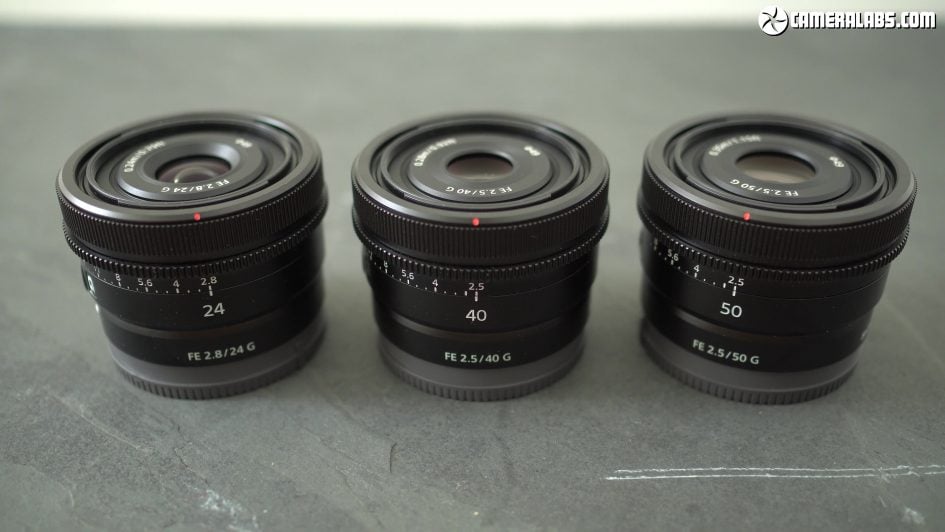
Above: The 24 2.8 was launched alongside a 40 2.5 and 50 2.5 as part of a compact triplet. All three share the same external styling and dimensions, not to mention the same $599 price, and I’ve made reviews of all three. Which is your favourite? I’m pleased Sony’s finally got round to making more small lenses. After all, the full-frame Alpha mirrorless system was launched alongside a compact 55 1.8 and 35 2.8 that demonstrated the potential for portability, but then Sony’s focus turned to high-performing but inevitably larger lenses. Don’t get me wrong, I love the quality of the G Master series and appreciate some are small and light for their class, but I also feel Sony’s compact bodies deserve more small options for times when portability or discretion are most important.
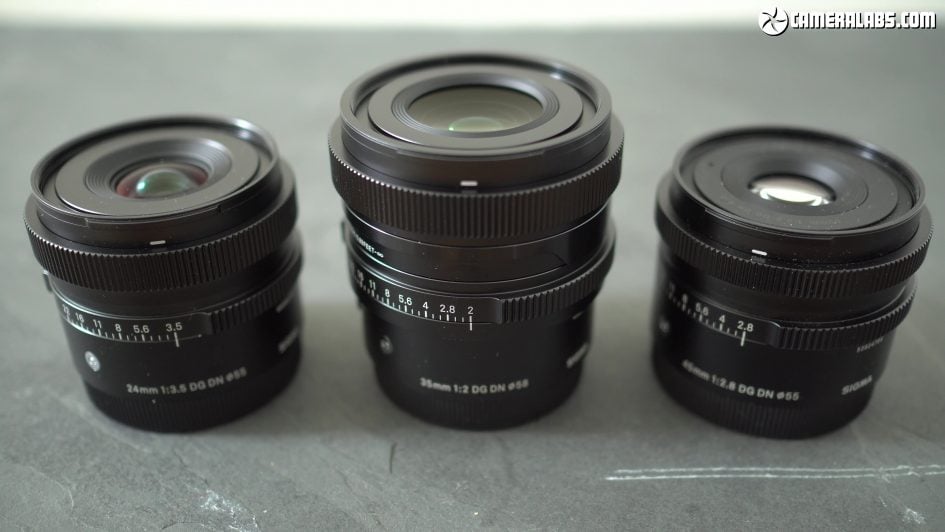
Above: Third parties certainly spotted an opportunity and ran with it, most notably Sigma which now has four compact primes available in the e-mount as part of its Contemporary I series. Here’s the Sigma 24, 35 and 45 models, with a 65 completing the set, and coincidentally the first three all cost roughly the same as the new Sonys. As a recent lens, the Sigma 24 3.5 is the perfect rival to the new Sony, so let’s see how they directly compare against each other.
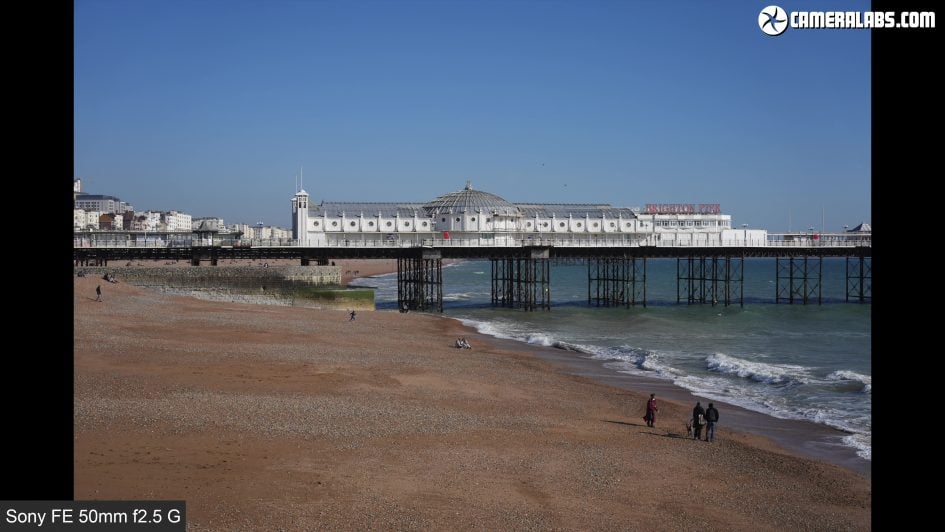
Above: Let’s start with coverage and to put 24 into perspective here’s the view when shooting with the Sony 50mm f2.5 G.
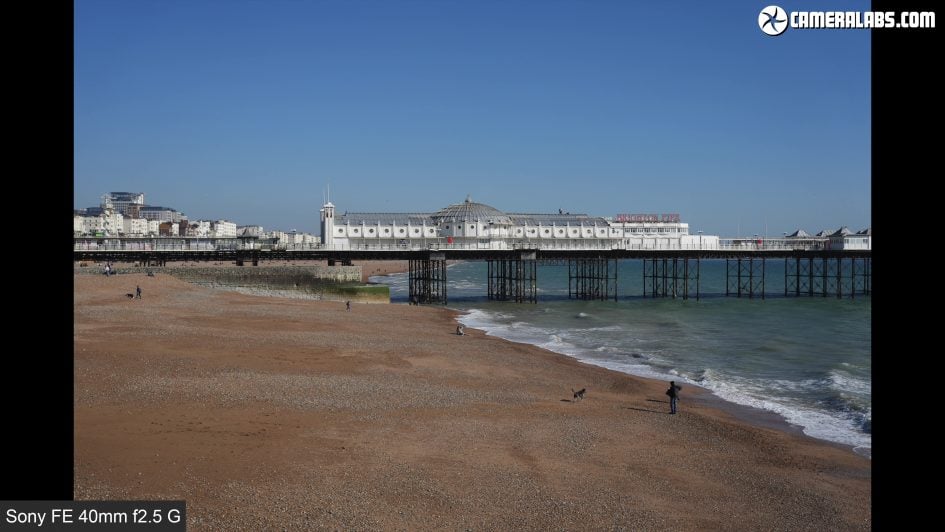
Above: And now for the slightly wider Sony 40mm f2.5 G. Both of these are considered standard coverage.
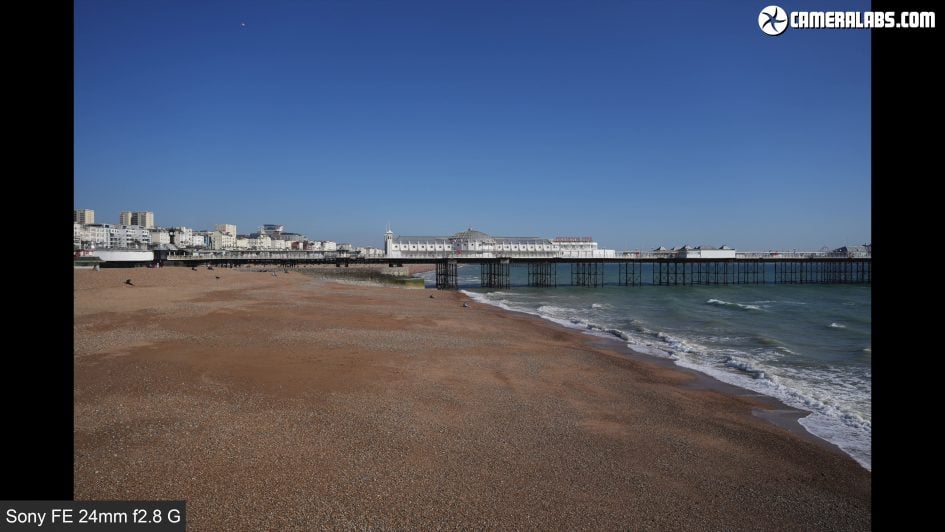
Above: Now for the Sony 24mm f2.8 G showing how much wider the view is from the same position.
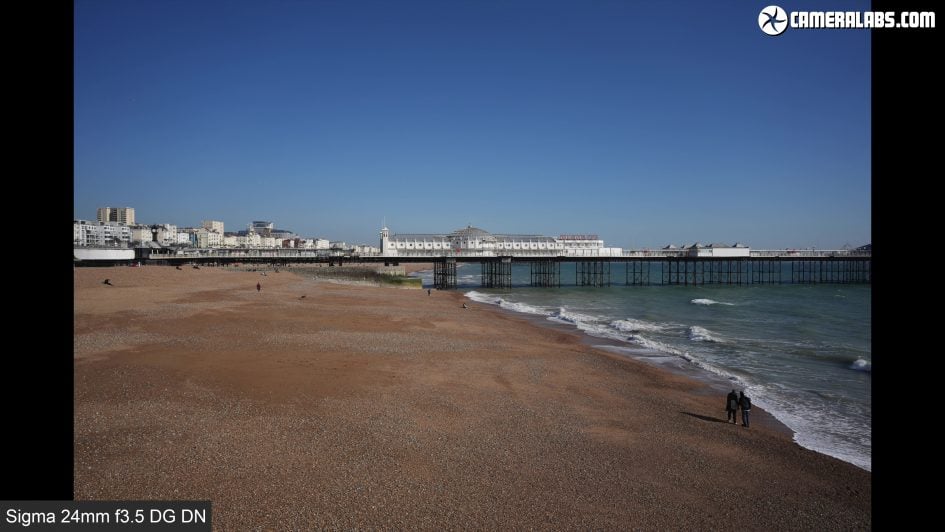
Above: And finally switching to the Sigma 24mm f3.5 which as you can see is capturing a slightly tighter field of view. All these images are JPEGs taken with a Sony Alpha 1 using the default compensation settings. As I’ll show you later, the Sony 24 2.8 is actually capturing an even wider view in RAW, before cropping it slightly to correct for geometry, but the end result remains a little wider than the Sigma.
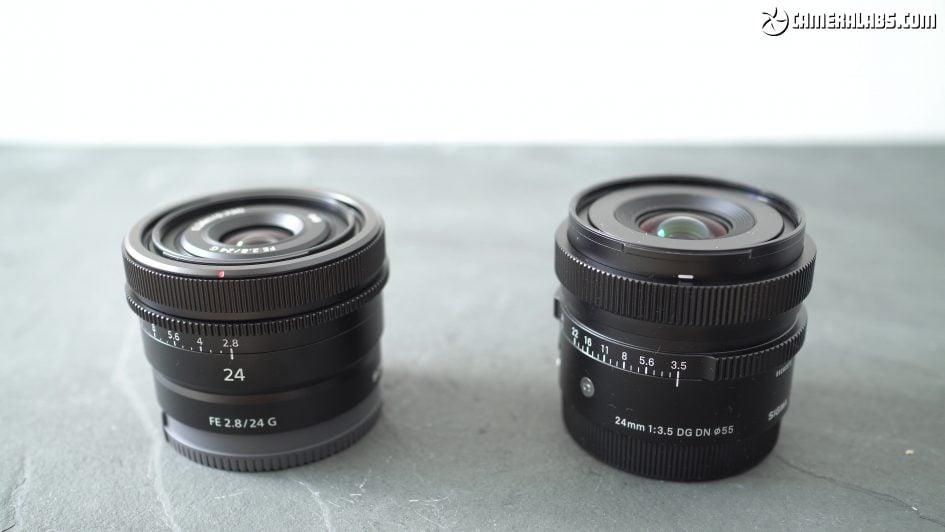
Above: At 68x45mm and weighing 162g, the Sony 24 2.8 on the left can’t quite be described as a pancake lens, but remains very compact and light. In comparison Sigma’s 24 3.5 on the right is narrower and longer, and a little heavier too at 230g, but once they’re both mounted on a body you won’t notice much difference in size and weight. I have them here on an Alpha 1.
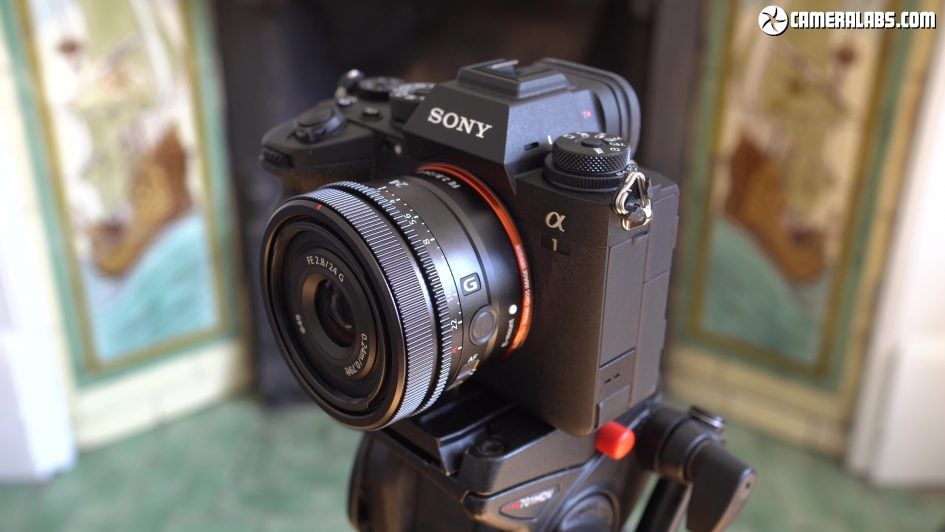
Above: They do have quite different designs and controls though. The Sony 24 2.8 has a tactile but very narrow aperture ring with a smooth focusing ring positioned right alongside. Impressively Sony’s also managed to squeeze in a small customisable focus hold button as well as the chance to declick the aperture ring with a switch, features both missing from the Sigma not to mention most small lenses. The filter thread measures 49mm.
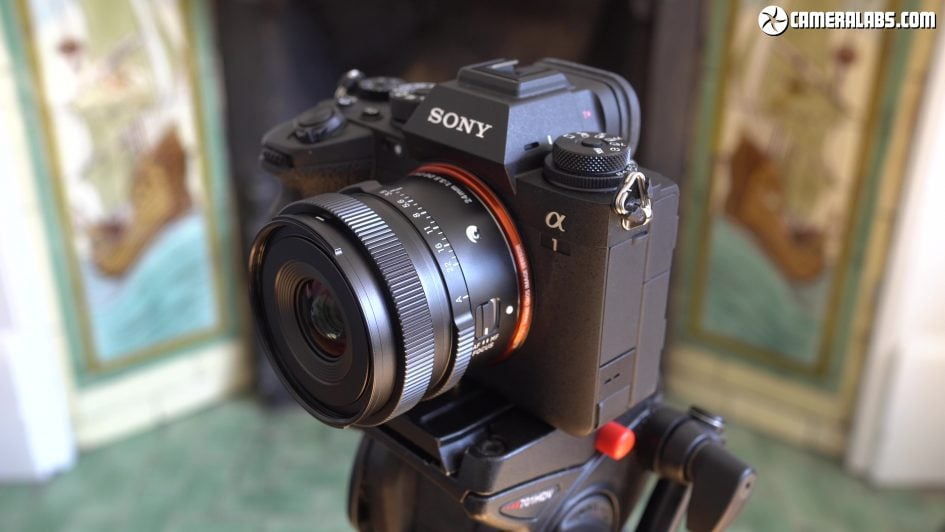
Above: Meanwhile the Sigma 24 3.5 positions its aperture ring further back with wider knurling on either side of the f-numbers. The manual focusing ring is similarly-damped to the Sony lens, but again the Sigma lacks the focus hold button and de-clickable options. It’s less-featured, but less cramped too and has an attractive vintage style. The Sigma takes larger 55mm filters.
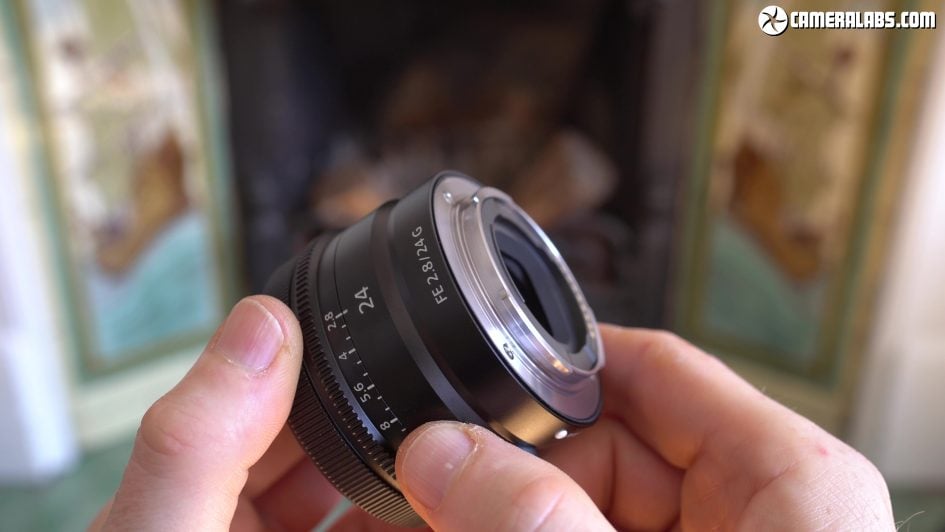
Above: Both lenses are described as being dust and splash-proof with subtle rubber grommets at their mounts, although Sigma’s sealing doesn’t extend to the whole barrel.
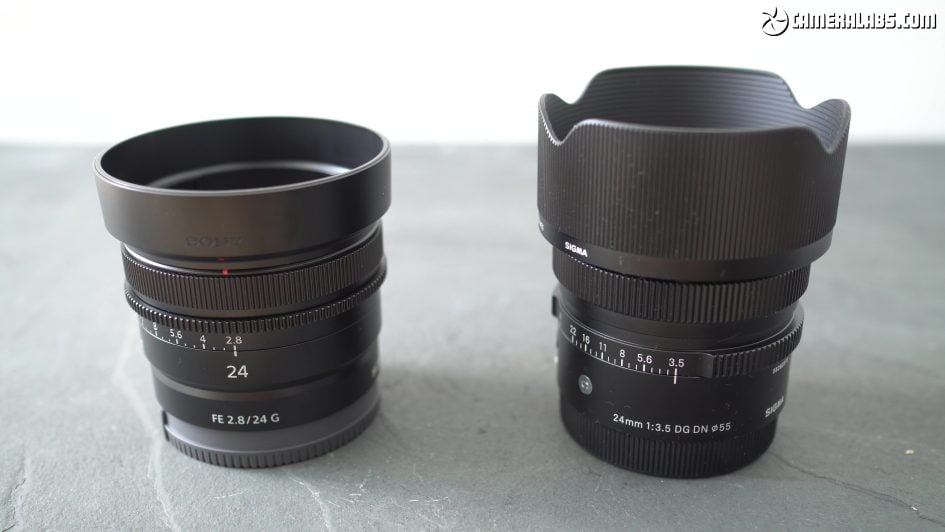
Above: Both lenses are supplied with quite different hoods. The Sony 24 2.8 on the left comes with a short cylindrical hood which, as an aside, is the major design difference with the inward-sloping hoods supplied with the 40 and 50 models. Meanwhile Sigma supplies a more substantial petal hood that will obviously occupy more space in a bag, but provides greater protection. I also quite like the ribbed styling on the Sigma hoods that ties in with the vintage look of the lens.
In terms of focusing in Single AFS on an Alpha 1, the Sony 24 2.8 is smooth, quiet and confident as you’d expect, and from close range, some blurring is possible even at wide focal lengths. Switching to the Sigma 24 3.5, again on the Alpha 1 at the maximum aperture and you’ll see it’s equally capable at focusing. Note when using single AFS mode for stills photography, I’ve found Sigma lenses on Sony bodies often use a contrast-based wobble to confirm focus, but once the body is set to Continuous AFC, they settle on the target in one motion.
Next for a video AF test with the Sony 24 2.8 on the Alpha 1 with Wide area and Continuous AFC. With human eye detection enabled, the camera drives the lens very confidently. The 24mm focal length may not be your first choice for portraiture, but if the subject’s positioned carefully it can work for environmental compositions where you see more of the surroundings, plus it’s an ideal focal length for handheld vlogging. Meanwhile the Sigma 24 3.5 does an equally good job at keeping me in sharp focus as I move around the frame. Let’s now take a closer look in a stills portrait comparison.
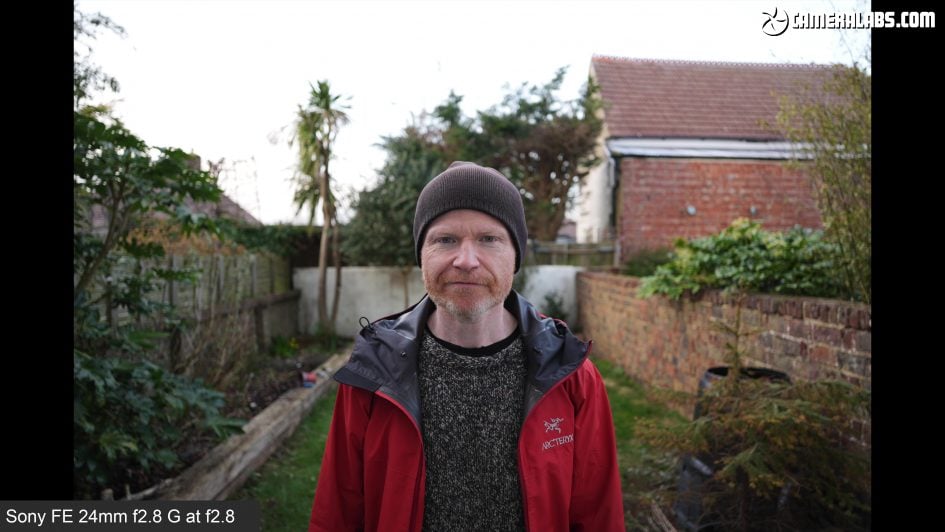
Above: I’m starting with the Sony 24 2.8 with its aperture wide-open, where it’s possible to achieve a small amount of blurring in the background.
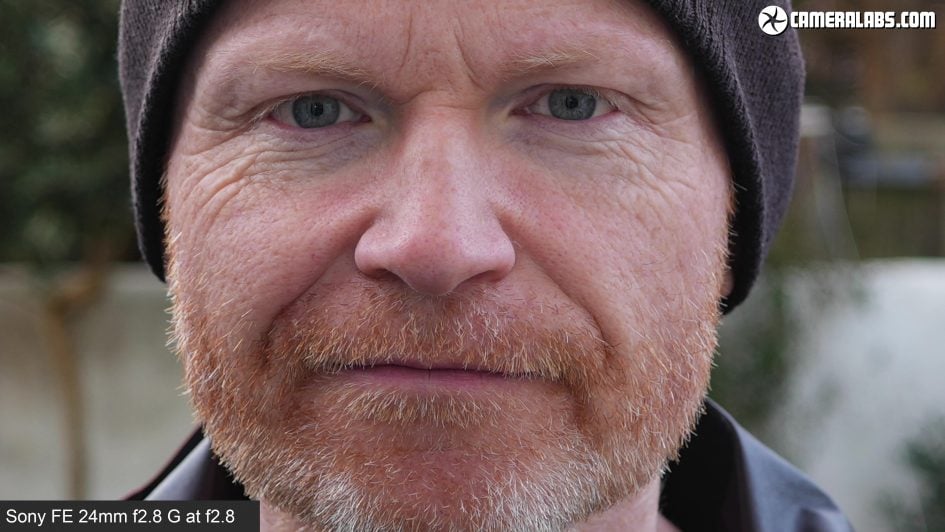
Above: Taking a closer look at the Sony portrait shows pin-sharp details on my eyeball as driven by the Alpha 1’s eye-detection, and across multiple portrait tests every single eye was equally sharp. Overall the lens proved to be very sharp on subject details even when coupled with an unforgiveably high resolution body.
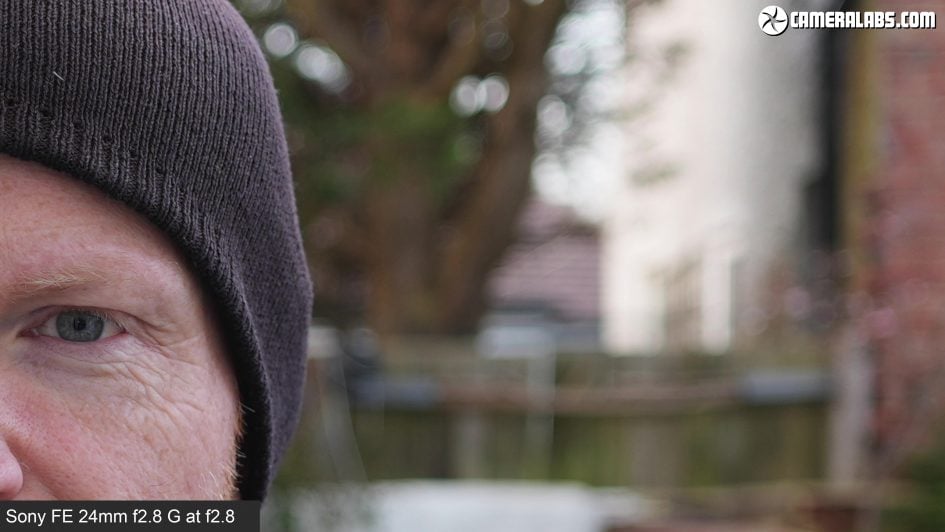
Above: Moving sideways for a look at the rendering shows a little blurring, although for greater subject separation you’ll understandably need faster and or longer lenses. Like the 40 and 50mm lenses launched alongside it, I’d say the edges of blurred shapes on the 24 is a little better-defined than I’d personally like, resulting in a busier background than lenses with softer rendering styles.
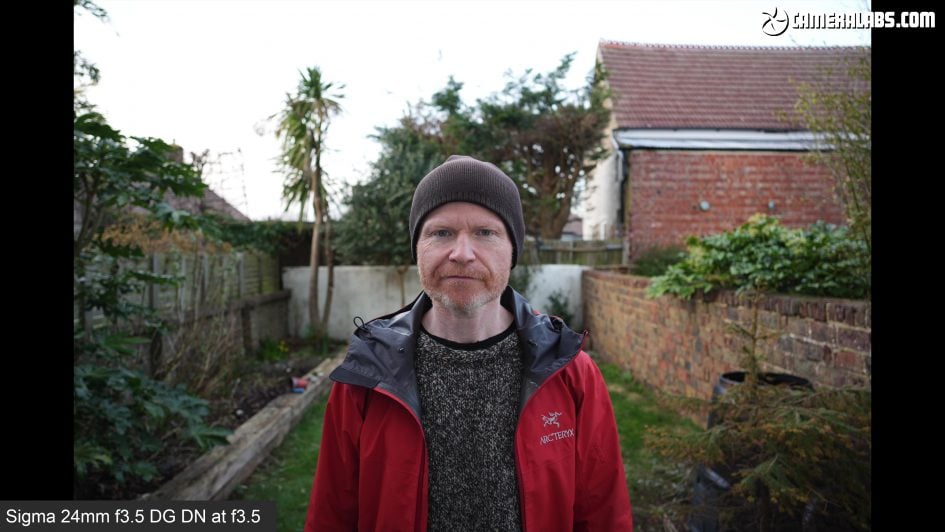
Above: Now for the Sigma 24 3.5 shot from the same position where again you’ll notice the slightly tighter field of view.
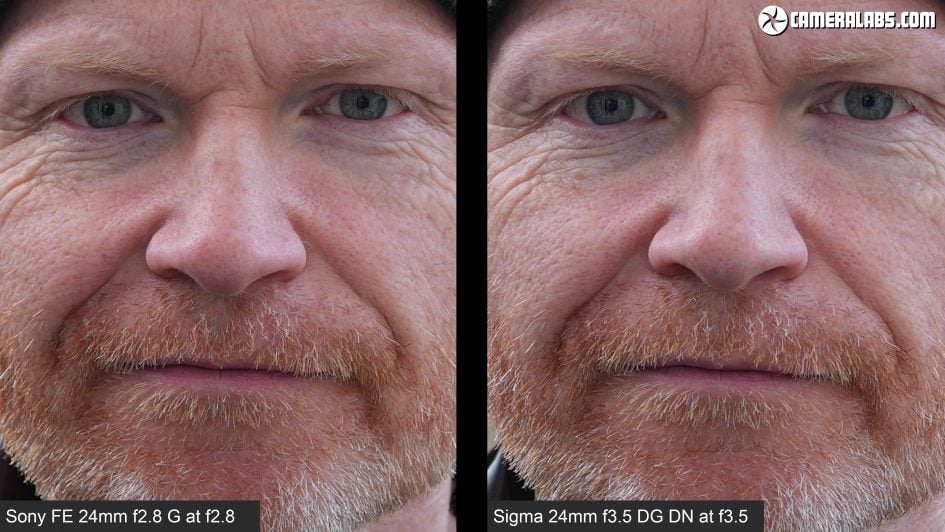
Above: Here’s a close look with the Sony on the left and the Sigma on the right where you can see both are capable of capturing very fine details, although the Sony is arguably a fraction sharper here, perhaps due to nailing the focus on my eye a little more accurately. In my tests I found the Sony lenses delivered a 100% hit rate with face and eye detection, whereas the Sigma lenses were a little lower at least when using eye detection on the Alpha 1. That said, I still managed to get plenty of focused portrait switch the Sigmas, just not every single one of them.
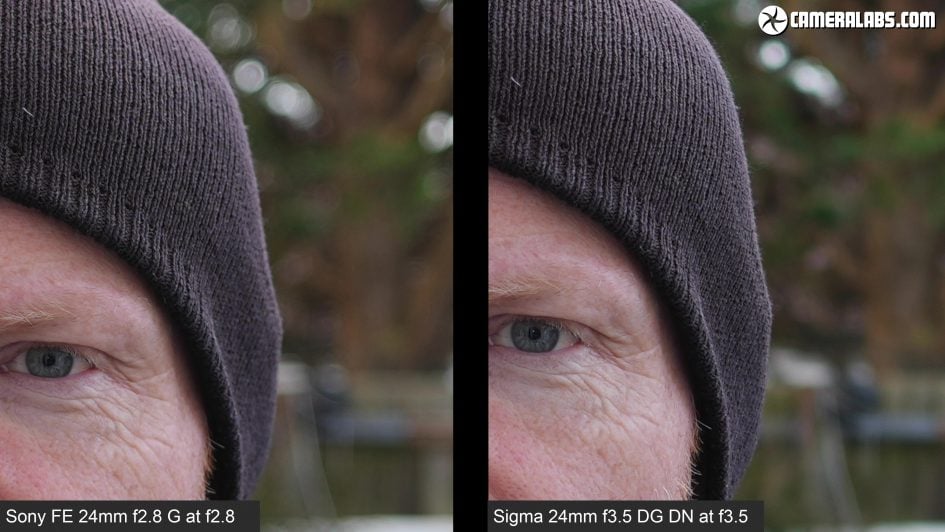
Above: Comparing their rendering in the background though tells an interesting story. Looking closely the slightly faster f2.8 aperture on the Sony is indeed delivering slightly larger blurred shapes than the f3.5 of the Sigma, but compare their edges and you’ll see the Sigma’s rendering is much smoother with more gradual transitions compared to the sharper edges of Sony’s bokeh blobs. It’s a personal choice, but I prefer the look of the Sigma’s rendering here even though its aperture is a tad slower.

Above: Next for the rendering of bokeh balls from close range, starting with the Sony 24 2.8 near to its closest focusing distance. From this distance it’s possible to generate small bokeh balls, but in the same way as the 40 and 50mm versions, there’s visible outlining around their edges albeit less obvious patterns within. With the lens closed to f4 or smaller, the seven-bladed diaphragm system also becomes visible with blobs taking on a seven-sided shape.
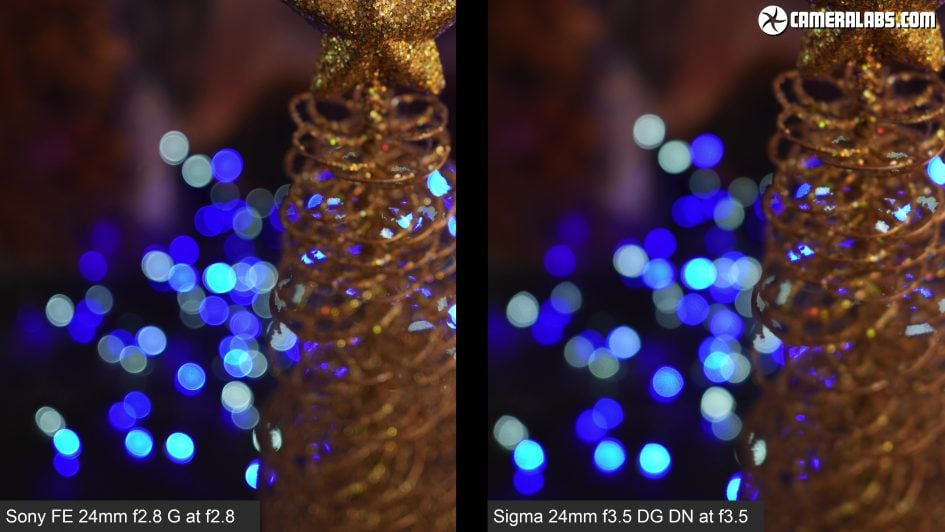
Above: Here’s the Sony 24 2.8 on the left and the Sigma 24 3.5 on the right, both at their maximum apertures and from the same distance. As seen on previous comparisons, the Sigma captures a slightly tighter field of view which in turn compensates for the slightly slower aperture to deliver similar-sized blobs in this test. Their rendering style is fairly similar here, although while the Sigma is not immune to outlining and patterned interiors, I’d say its rendering is a little smoother than the Sony here.
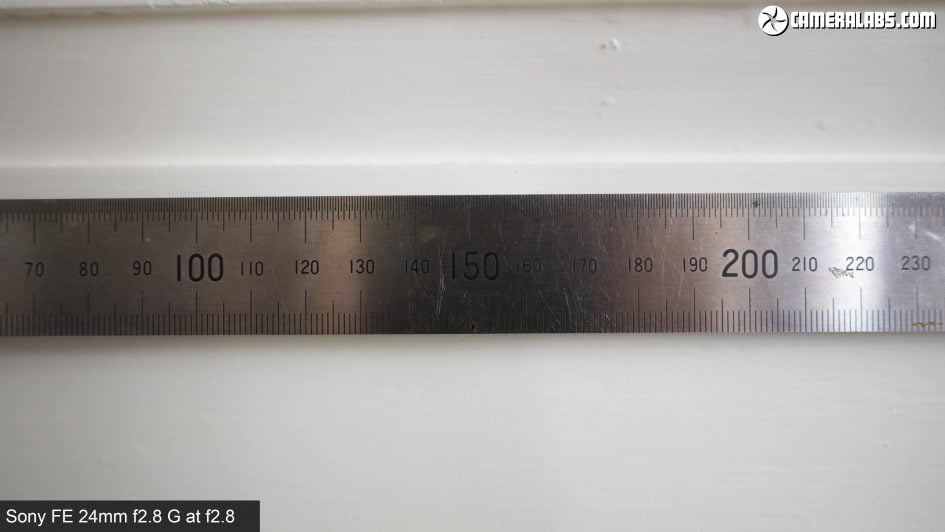
Above: In terms of minimum focusing distances, Sony quotes 24cm with autofocus or 18 in manual, and here’s what I could achieve when manually focusing – reproducing a subject size of just over 17cm, and even with the aperture wide-open the details are pretty sharp right up to the edges.
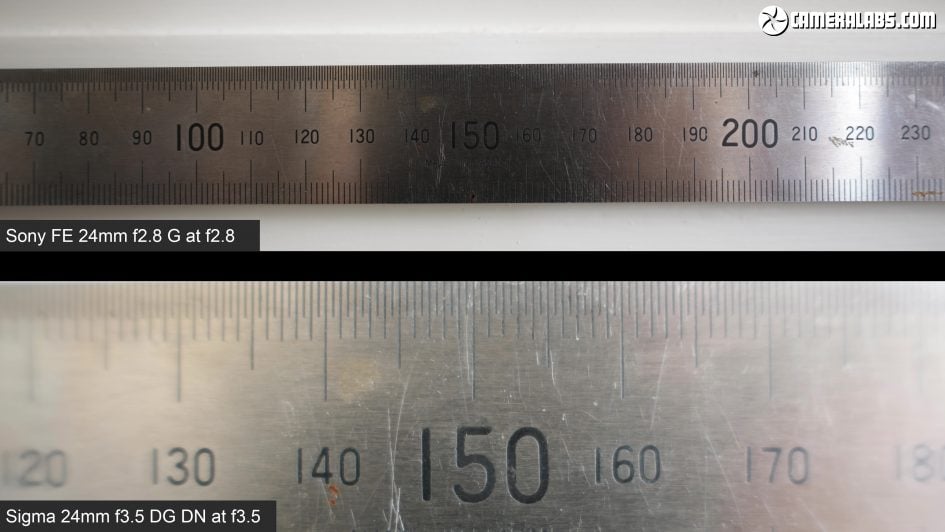
Above: Now here’s the Sony 24 at the top and the Sigma 24 at the bottom, both from their closest manually-focused distances and their maximum apertures. The Sigma at the bottom can focus much closer to 10.8cm, allowing it to deliver much greater magnification, reproducing 6.5cm across the frame. But from this distance it quickly becomes soft away from the centre, so it’s best-suited to subjects in the very middle with dreamy-looking surroundings. That said if you close down the Sigma or shoot from further away, it becomes sharper towards the edges.
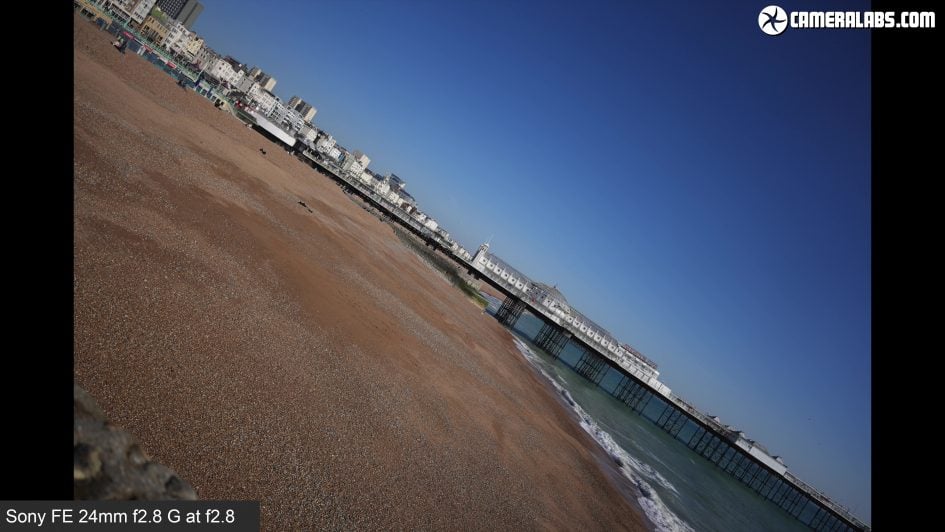
Above: At the other end of the scale, here’s my distant landscape scene, starting with the Sony 24 2.8 on the Alpha 1 at f2.8, and with the view angled so that details run right into the corners.
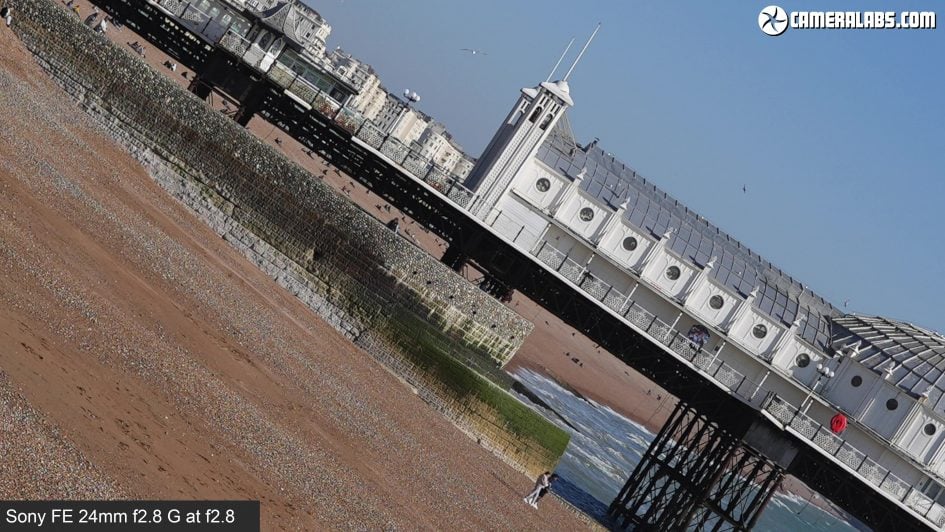
Above: Zooming-in on the middle section reveals perfectly crisp details at the maximum aperture with no benefit to closing it down to improve the quality further.
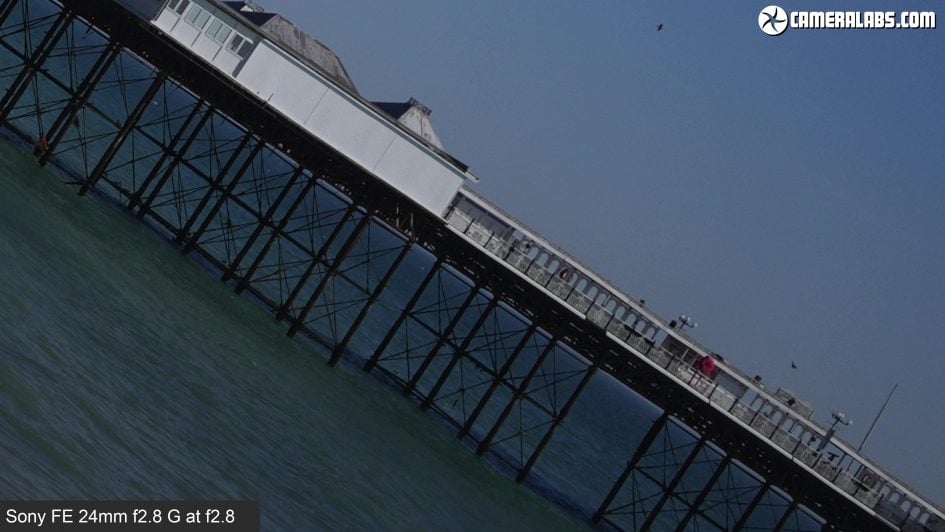
Above: Moving out to the far corner proves the lens can maintain the detail again with the aperture wide-open. There’s unsurprisingly come vignetting, or darkening in the corners, at f2.8, but this reduces as you gradually close the aperture. Overall though, like the 40 and 50 versions, I’m satisfied by the 24’s performance wide-open. Toggling between uncorrected RAW files and the in-camera JPEG versions reveals the latter are benefitting from both geometric correction and compensation for vignetting. Compare that to toggling between RAW and JPEG versions shot with the Sigma 24 3.5 and you’ll see there’s no geometric corrections applied by default, although applying it from the lens menu of the Alpha 1 did improve some barrel distortion.
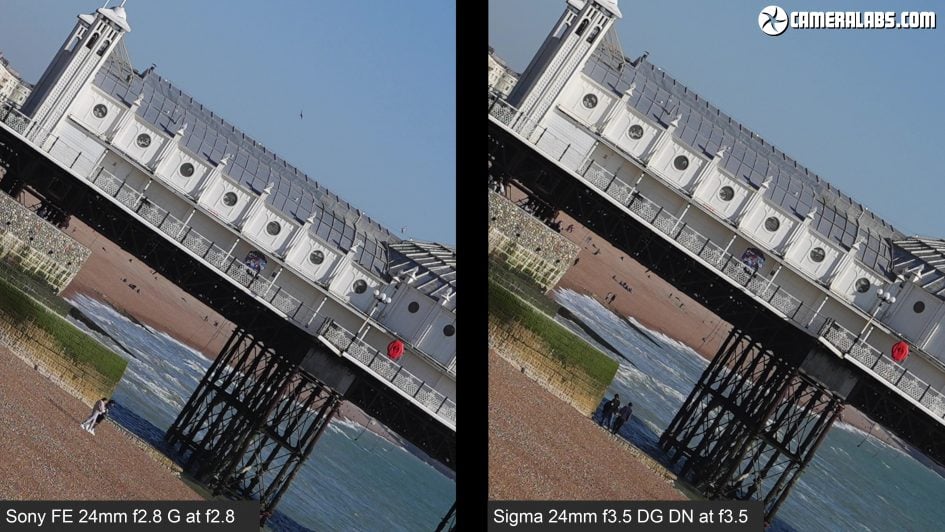
Above: With the Sony 24 2.8 on the left and the Sigma 24 3.5 on the right, showing magnified views of their central areas, you’ll see both perform very well at their respective maximum apertures, although again the Sigma’s view is a little tighter.
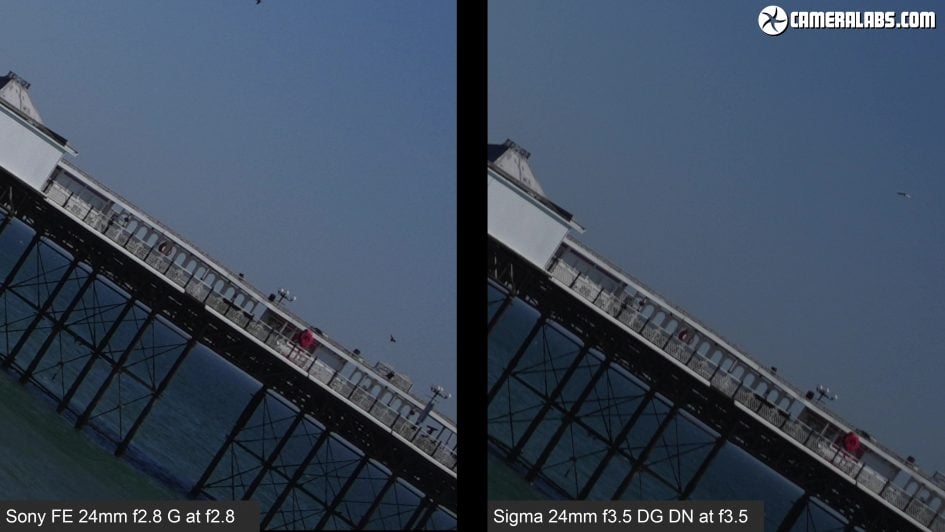
Above: Switching to their corners and again that difference in coverage means we’re looking at different details but from the same part of the frame. Both are a little softer in the corners compared to their central areas and there’s darkening due to vignetting too, but overall their performance for distant subjects is fairly similar here, and once stopped-down, are essentially neck-in-neck.
Just before wrapping-up, a few comments for videographers. I enjoy filming at 24mm for the same reasons as shooting photos – the ability to capture a satisfyingly wide field-of-view, while also being more forgiving to handheld shooting. It can work well for people so long as they don’t get too close and avoid the edges where distortion can become unflattering. Great if you want to see more of your surroundings. This is why it’s also an ideal focal length for handheld vlogging, although if you intend to apply stronger digital stabilisation which incurs a crop, you may begin to find it not wide enough. If you intend to use Active SteadyShot or post-stabilisation in Catalyst, I’d suggest the Sony 20mm f1.8 or the Samyang 18mm f2.8. If you intend to crop a lot, even the Sigma 16mm f1.4 for APSC sensors could be an option.
And finally a focus breathing test starting with the Sony 24 2.8 manually focusing from infinity to the closest distance and back again at f22. As you focus the lens closer, the field of view increases, opposite to the 40 and 50 which gradually tighten their views as you focus closer. Either way, breathing is quite apparent on all three of the Sony compact primes, although also present on some of their high-end models too. Meanwhile the Sigma 24 3.5 also exhibits visible breathing, but this time it has the opposite effect of reducing the field of view as you focus closer.
Check prices on the Sony FE 24mm f2.8 G at B&H, Adorama, WEX, or Calumet.de. Alternatively get yourself a copy of my In Camera book or treat me to a coffee! Thanks!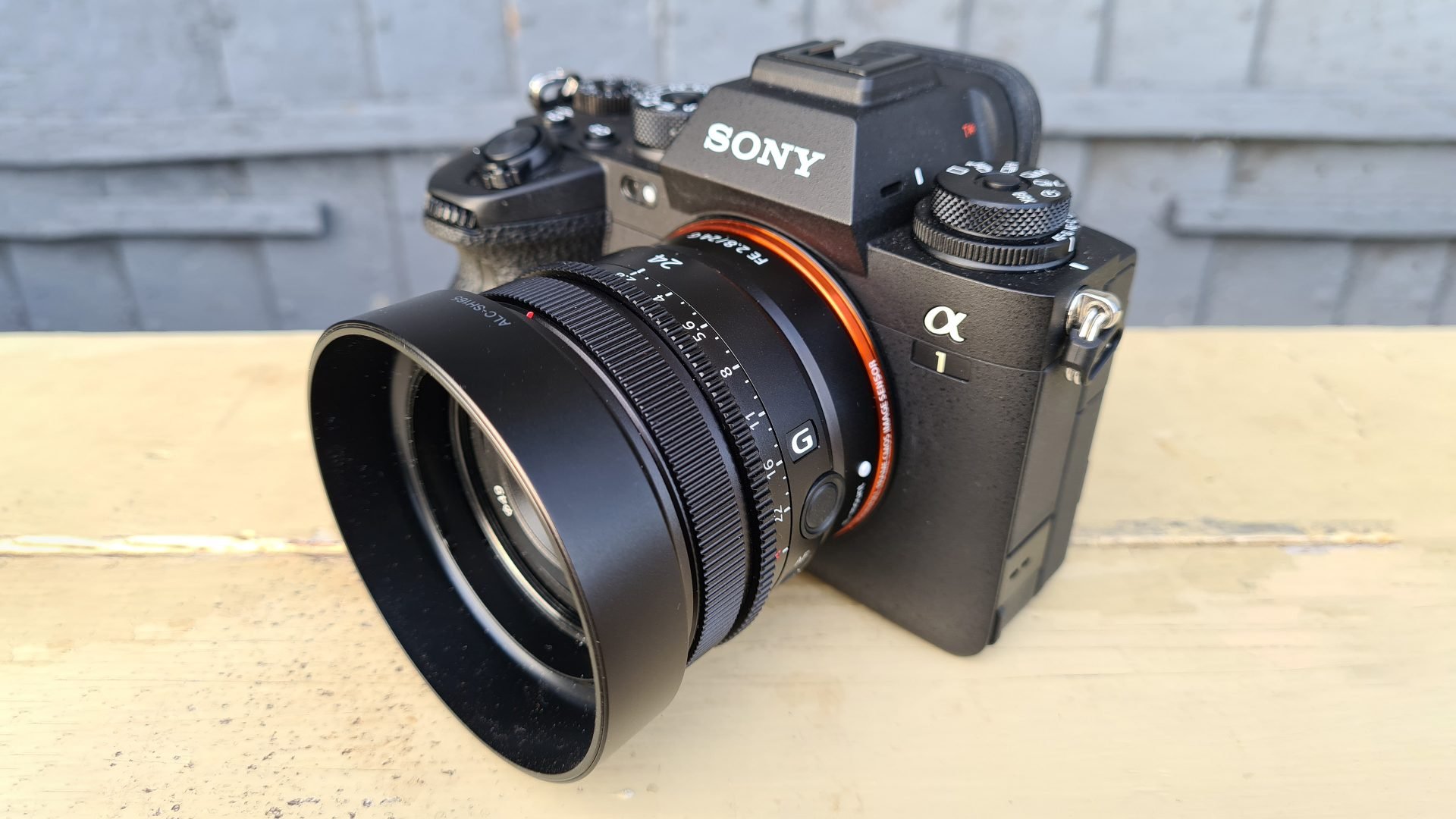
 The Sony FE 24mm f2.8 G is an attractive mid-priced prime lens for anyone who enjoys wide-angle photography. The quality is sharp across the frame even at large apertures, the focusing quick and quiet and the lens well-featured with weather-sealing, a focus hold button and de-clickable aperture ring. Best of all, you’re getting a decent degree of performance in a very compact and light-weight lens, making for a very portable combination with Sony’s smaller bodies. Like the 40 and 50 versions launched alongside it, my only complaints are sharper-edged and busier rendering than I’d like, along with quite noticeable focus breathing although the latter will only annoy some videographers and is also present on some of Sony’s high-end lenses too. Overall the Sony 24 2.8 G is a solid choice for wide-angle photographers who value portability over the shallowest depth-of-field or smoothest rendering. It plays to its strengths, delivering sharp results even on the highest resolution bodies and fast reliable autofocus.
The Sony FE 24mm f2.8 G is an attractive mid-priced prime lens for anyone who enjoys wide-angle photography. The quality is sharp across the frame even at large apertures, the focusing quick and quiet and the lens well-featured with weather-sealing, a focus hold button and de-clickable aperture ring. Best of all, you’re getting a decent degree of performance in a very compact and light-weight lens, making for a very portable combination with Sony’s smaller bodies. Like the 40 and 50 versions launched alongside it, my only complaints are sharper-edged and busier rendering than I’d like, along with quite noticeable focus breathing although the latter will only annoy some videographers and is also present on some of Sony’s high-end lenses too. Overall the Sony 24 2.8 G is a solid choice for wide-angle photographers who value portability over the shallowest depth-of-field or smoothest rendering. It plays to its strengths, delivering sharp results even on the highest resolution bodies and fast reliable autofocus.



